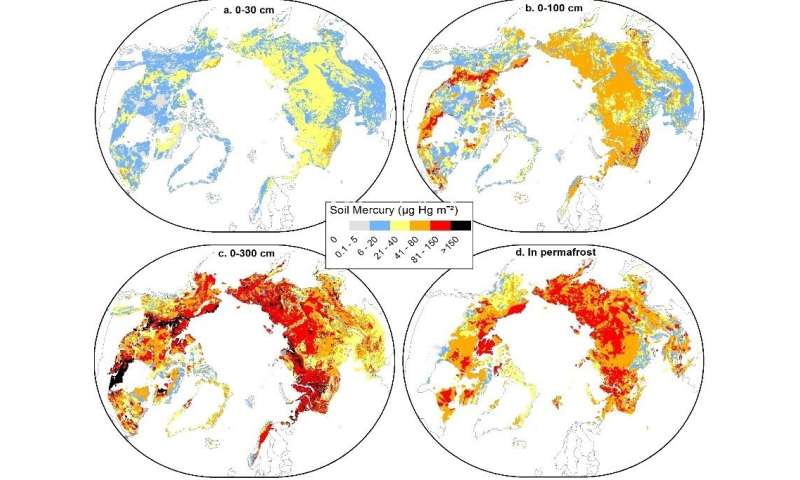Best of Last Week–Massive reserve of mercury in permafrost, new way to filter salt from water, and maybe curing baldness

It was a big week for news about planet Earth as a team at the University of Auckland found that a 'sinking' Pacific nation is getting bigger—many had expected the island nation of Tuvalu to disappear as ocean levels rise, but instead, it is actually getting bigger, the team found. Also, an international team of researchers found massive reserves of mercury hidden in permafrost—the largest-known reserve on the planet, and one likely to present problems for northern inhabitants as the Earth heats up. Also indirectly impacting Earth, a team from the Scripps Institution of Oceanography and the University of California found that reduced energy from the sun might occur by mid-century, enough to offset some greenhouse gas warming.
In technology news, a joint effort by researchers from Monash University and the University of Texas has resulted in the discovery of an efficient and sustainable way to filter salt and metal ions from water based on metal-organic frameworks. And a group at the University of Maryland announced that they have developed a new process that could make wood as strong as titanium alloys, but lighter and cheaper—offering a less expensive alternative to products made with carbon fiber. Also, a combined team of researchers from the University of New South Wales, the University of Adelaide, the University of South Australia and the Australian National University found that the future of wireless communications is terahertz, based on a novel platform that could tailor telecommunication and optical transmissions.
In other news, NASA announced that New Horizons has captured record-breaking images in the Kuiper Belt and released some of them to the press. And a team with members from Yokohama National University and Okayama University of Science found a way to regrow hair at a record rate in mice, possibly hinting at a cure for human baldness. And a joint project between Britain's Natural History Museum and University College London led to worldwide headlines, as the researchers announced finding DNA evidence showing that the first modern Briton had dark skin and blue eyes—"cheddar man" lived in what is now southwest England approximately 10,000 years ago.
And finally, if you are someone who likes to live or work in low-light environments, you might want to rethink your lifestyle as a team at Michigan State University found that dim light may make us dumber—or at least harm our ability to remember and learn.
© 2018 Phys.org